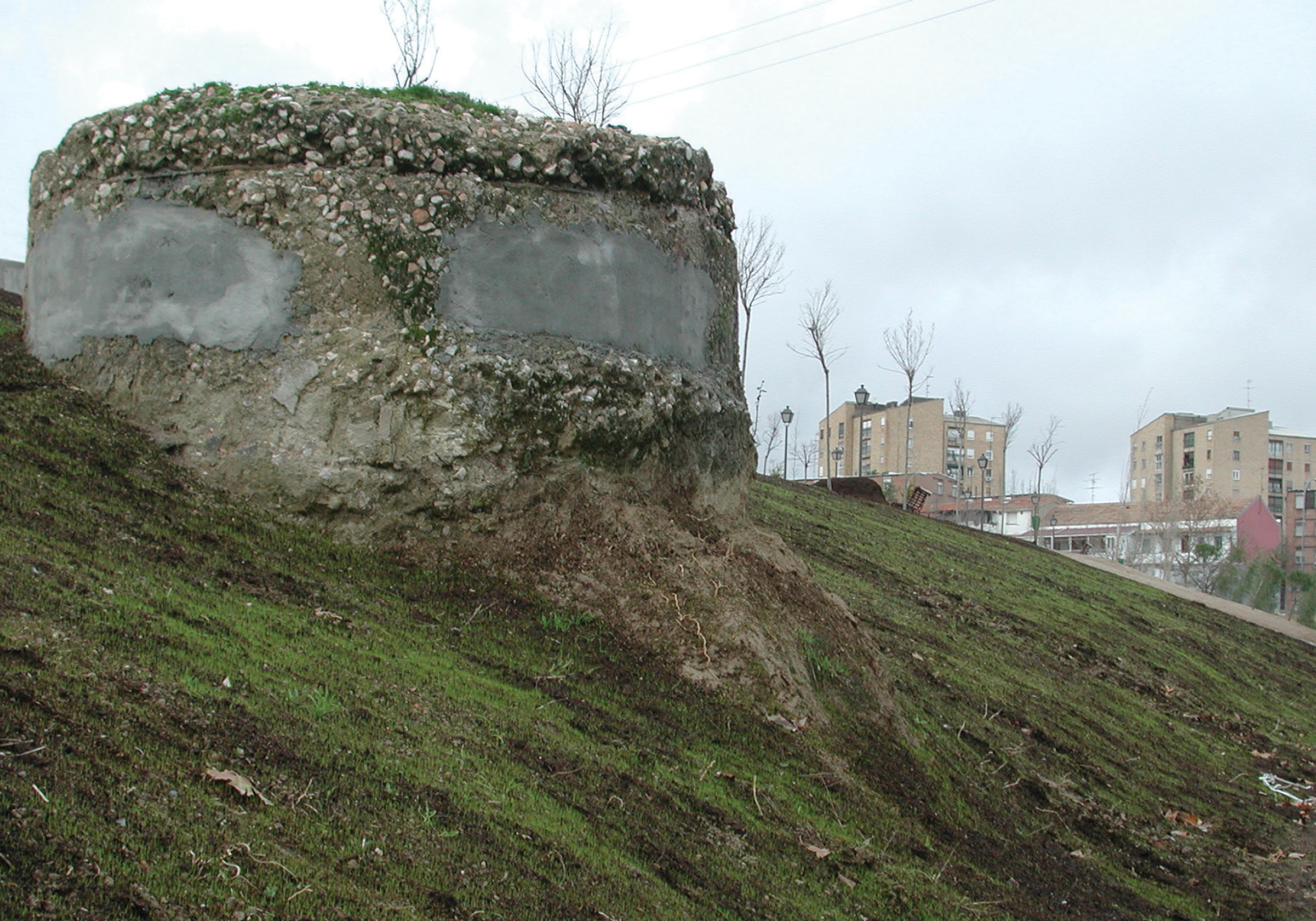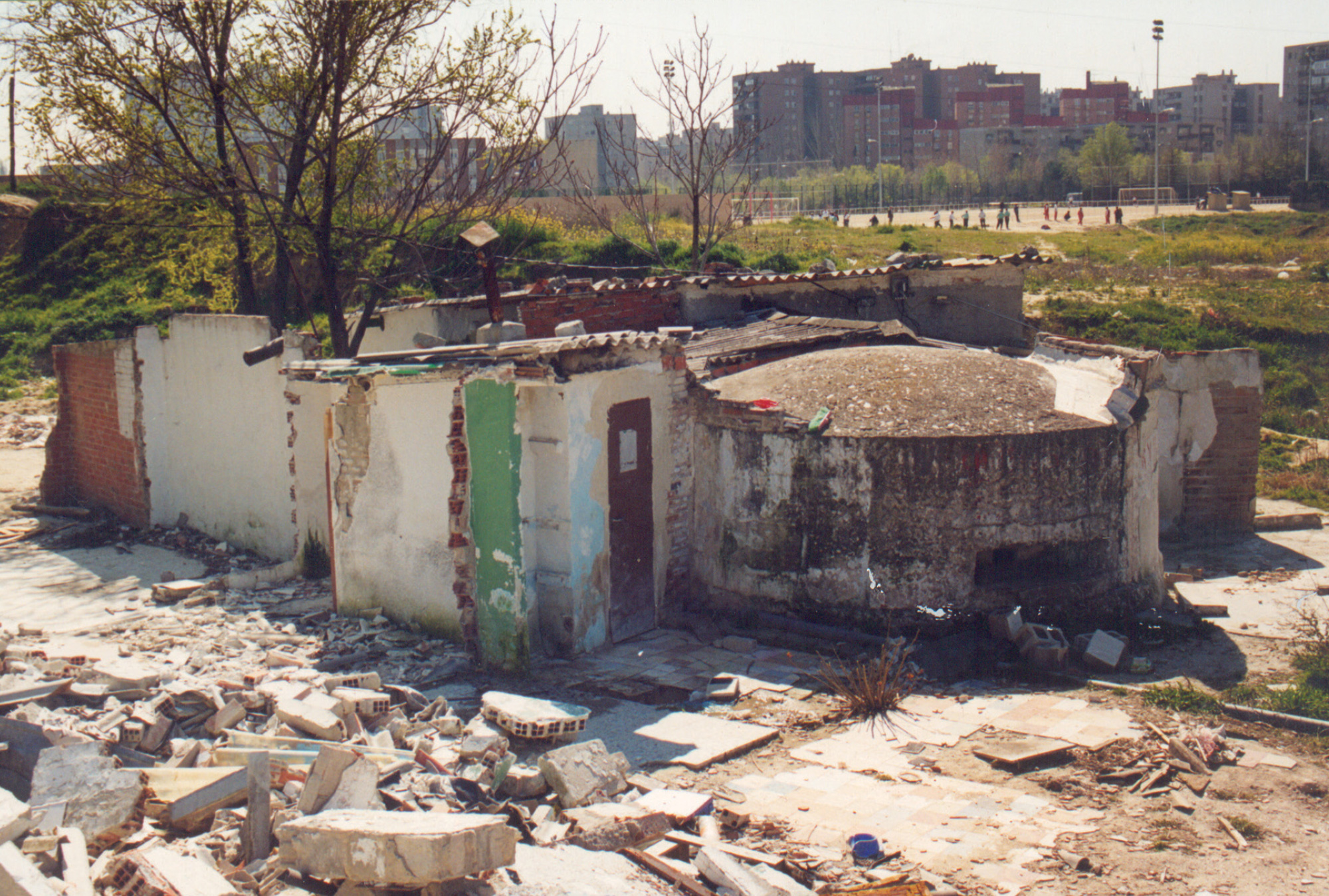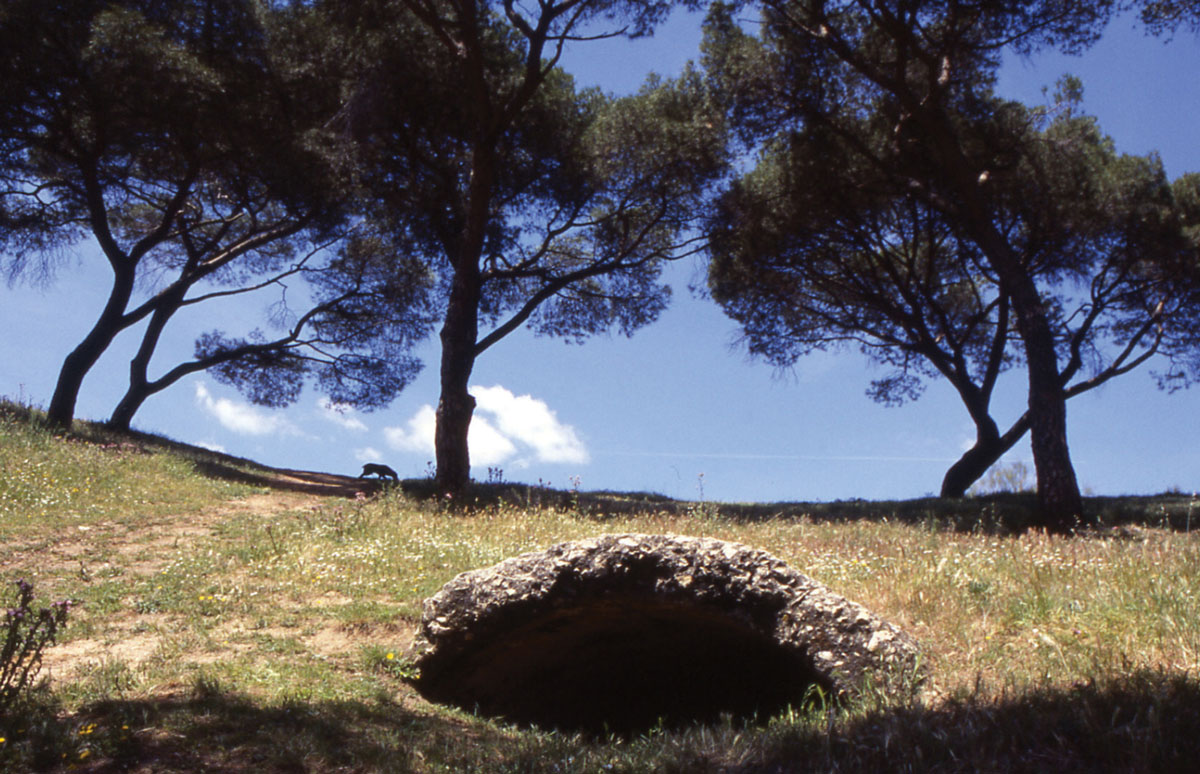Leftovers / Coming to the Surface
Beneath modern Madrid, traces of Franco
Amanda Schachter
“Leftovers” is a column that investigates the cultural significance of detritus.
I had been living in Madrid for several years before I came upon Avenida del Generalisimo. Or rather, I had often walked the same avenue, once named in honor of Spain’s longtime dictator, General Francisco Franco, and now known to everyone as Paseo de La Castellana. After Franco’s death, Madrid’s thoroughfares and public spaces underwent a makeover, discarding their tributes to fascism and returning to their pre-1938 names or assuming new, impartial identities. The city’s main spine, developed by Franco, now democratically celebrates “The Castilian,” embracing the Spanish citizen. What I found along La Castellana was a weathered, old-fashioned street sign left posted at the northern end. Along this portion of the avenue, built in the mid-1950s, one can recognize traces of other Generalisimo signs; old bolt holes and exposed squares like cast shadows beneath shiny new Castellana plaques. The sign I found seems to have been missed accidentally; neighbors who pass by seem unaffected. One woman matter-of-factly hypothesized that the city had left a few signs up for the postmen in case a letter arrived from abroad marked with the old address. No one I asked seemed to think it was worth the bother of taking down.

Not that outright remnants of Franco are hard to find in Spain, or even in and around Madrid. A graffiti-stained equestrian statue of Franco with an as-yet-unscheduled demolition date stands at the southern entrance of Nuevos Ministerios, a Republican-built government complex in downtown Madrid.[1] On a clear day, looking northwest from a seventh-story apartment window, one can see the Valley of the Fallen, an enormous monument to Franco built under his mandate, located outside the capital against the Sierra de Guadarrama mountains. The burial place of Franco and 50,000 Nationalist soldiers and sympathizers whom he led in the Civil War, the tombs were built with the forced labor of Republican political prisoners between 1940 and 1959. Right-wing Nationalists still make pilgrimages to the site; some participate in an annual run, in unison, clad in white T-shirts in the cold end-of-winter dusk, carrying funeral wreaths from central Madrid. The monument has even become a tourist attraction.
But the little street sign is perhaps more disturbing than the overblown memorials, rearing its head precisely where an effort has been made to cut it off. To passers-by within the city, it flashes like a reverie, momentarily overlapping Madrid’s successive earlier identities with the present one— each, in its time, intended to represent the country as a whole. Madrid, the power center of Spain, had been in constant flux for decades by the time Franco’s army entered the city and overthrew the country’s leftist Second Republic in 1939. Franco deposed an eight-year-old democracy that had followed on the heels of dictatorship, monarchy, and a nascent First Republic, all since 1873. The renaming of Madrid’s thoroughfares after his death in 1975 was essential in lending urban coherence and stability to the new democratic constitutional monarchy.
But, paradoxically, as Spain’s fascist dynasty recedes into oblivion, its physical remnants float more obviously to the city’s surface. These traces of a near past are incongruously being absorbed rather than obliterated, and they mount a wordless challenge to Spain’s allegedly clean return to democracy. What results is a confused combination of rejecting the dictatorship’s regime while tolerating its physical remains.

Last March, a bunker buried since the end of the Civil War in 1939 was unearthed amid excavation for a park in Madrid’s Lucero neighborhood. The cylindrical, six-foot-round by six-foot-deep reinforced concrete enclosure is one of a number of military installations that in 1936 were strung along the city’s southwestern edge by Franco’s army under General Varela. Originally beyond the city’s limits, the old front has been absorbed since by the ever-expanding urban fabric. The constructions were designed to sit low in the ground, peering out from their hillsides through two slit-windows, embedded “eyes” that survey the terrain in a series of geometrically sited pairs so placed to facilitate cross-fire angles. A secure spot from which to hold the line, one of these bunkers required only two or at most three soldiers to function. The Nationalists, comprised partly of Franco’s Foreign Legion up from Africa to help topple the Republican government, spent three years dug into this network before taking Madrid.
The reappearance of this bunker, in what is now a tranquil residential neighborhood near some of Madrid’s most extensive parkland, stirred brief curiosity in the media, which cited the efforts of a high-school teacher, Antonio Morcillo, to have the site preserved. Morcillo—whose father, a Republican veteran imprisoned by Franco, is now in his eighties—would like to see such emplacements cleaned, opened, and made part of an historical-tour itinerary. Municipal authorities, however, seem concerned merely to prevent them from becoming garbage heaps or refuges for squatters.
As part of his preservation campaign, Morcillo leads tours to view such nearly invisible war remains, including not only bunkers and trenches but scattered ammunition and even messages scrawled in curing concrete by Nationalist soldiers. Many of the sites on his itinerary were ransacked for building materials during post-war poverty, and often what remain are only unrecognizable mounds of abraded aggregate and dangling rebar. By the time I meet him for a visit to the Lucero bunker, nearly two months after it was unearthed, the little fort’s windows and door have already been blocked up with bricks and mortar. Morcillo laments that the city has robbed the bunker of its meaning, making it look more like a water tank than the machine-gun nest it was. I learn that the bunker’s twin has already been quietly demolished by developers, to make way for housing across the street.

From the Lucero bunker, we walk uphill to Cerro de la Mica, where five more sealed-off bunkers sit embedded in the hillside of the recently landscaped Cuna Verde Park. These have survived fairly well, having constituted the heart of a gypsy shantytown clandestinely settled a decade after the war and dismantled only in 1998. The residue of house paint and kitchen tiles gives the rough constructions an almost domestic feel. A few other bunkers are hidden below ground, the general level of the surrounding earth having been raised as a consequence of urban development. Their locations are known to Morcillo, however, through long investigation of military maps, photos, and writings, at times corroborated with stories told by his father and even with his own childhood memories.
Unlike Madrid’s evident, self-contained memorials to Fascism, these bunkers are vestiges of a system always reliant on and intertwined with its surroundings. When the Nationalists realized that Madrid was not going to yield and fall “like a ripe fruit,” they built the offensive line in three quick weeks with whatever was at hand—river stones, broken-up household crockery, plumbing from a nearby fountain. Now these structures are once again accretions of the debris from which they were made, cadavers too unwieldy to be removed and too disfigured to be properly eulogized.
Their latency operates even in language. “Bunker”—casamata, in Spanish—comes from casa-rematada, literally a “reinforced” or “finished” house. Without the re and da, the term becomes “kill-house.” The casamata’s threat to kill always resides within its own reinforced form, just as the shadow of the Generalisimo’s dictatorship is cast beneath the ordinary citizenship expressed by La Castellana. Embedded in Madrid as indelibly as the word’s meaning nests inside itself, traces of a persistent past use a shorthand of destruction and appropriation to surreptitiously incorporate all within reach.
- The only other remaining equestrian statue of Franco, in Ferrol, the dictator’s birth town in Galicia, was dismantled this summer amid controversy.
Amanda Schachter practices architecture in Madrid. She is co-founder of the design collaborative Aandacht Loop.
Spotted an error? Email us at corrections at cabinetmagazine dot org.
If you’ve enjoyed the free articles that we offer on our site, please consider subscribing to our nonprofit magazine. You get twelve online issues and unlimited access to all our archives.